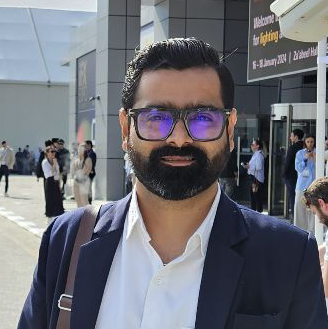Node is an open-source JavaScript run-time environment that allows developers to write and run JavaScript code that can function outside the browser. The JS in Node.js stands for JavaScript. It is usually executed on the V8 JavaScript engine, also responsible for running JavaScript on browsers like Google Chrome.
Node.js is used by more than 1.3% of the websites we know about, i.e., about 20 million websites. The main reason for its popularity among developers is its ability to handle multiple requests at the same time instead of creating a long queue. Node.js hit the milestone of 1 billion downloads in 2018 – in just nine years since its launch.
A Node.js development company uses Node.js to create tools and apps to be used on browsers and applications.
How to Choose The Best Node.js Framework
Node.js frameworks are of three types: MVC, Full-stack MVC, and REST API:
An MVC framework works on three parameters: Model, View, and Controller. It handles complex projects very efficiently. A full-stack MVC framework is usually used when building a real-time app because it has a larger library and range for development.
REST (Representational State Transfer) API is generally used when a Node.js application development needs to be swift.
Node.js frameworks are chosen by developers because of these two parameters:
SCALABILITY:
Node.js is an intuitive framework that provides opinions. However, choosing an opinionated framework may mean getting directed in the wrong direction. This can affect the scalability of the project.
FUNCTIONALITY:
The framework's functionality includes parameters like cluster organization, management, and batch support. Different frameworks have different types of security locks, and this can be one of the deciding factors for the framework you choose.
Best Node.js Frameworks
There are a plethora of different tools developed in Node.js. The best framework for you may depend upon your application. Given below is our personally curated list of the top 10 Node.js frameworks in terms of their usage and feasibility.
EXPRESS.JS
Express is a minimalistic framework with straightforward coding architecture. It does not require any additional learning and can be used when developing apps with fast loading speed.
The framework includes many intelligent HTTP helpers, which can make the program reusable. It is user-friendly and does not require highly specialized knowledge. It is one of the most popular frameworks used during Node.js application development by both development teams and individual developers.
The framework allows for simplified communication between the client and the server by streamlining the request placed by the client. It is used by companies like Twitter, Uber, and Accenture.
SAILS.JS
Sails are the ideal framework if the developer wants to build a high-end customized application with specific codes. Sails are based on Express.js and are a lightweight framework that is used to use API created by another development team.
The sail has reusable security policies and a code generator. This allows developers to reduce the time spent on writing code and focus on other features. The framework can also work with multiple databases simultaneously, which further decreases the coding time required by the developers.
Two of the most popular companies which use Sail are Lithium and Greendeck. They are preferably used when developers want to build a customized application for enterprises. It may not be as flexible as Express but is one of the most commonly used Node.js frameworks.
HAPI
Hapi is known for its minimality and scalability. It provides fast bug-fixing and has a wide range of built-in plugins that help developers without worrying about middleware. Hapi is a commercial framework, and therefore, it is usually used for proxy applications.
Node.js application development using this framework allows flexible and scalable apps. It also includes default cache and authentication protocols that can be included in the application. Hapi is usually used when developers want to develop an exceedingly secure and scalable application.
It is generally used to develop social media applications due to its security standards.
METEOR.JS
Meteor is a simple, efficient framework that can be used by any developer well-versed in JavaScript. For a Node.js development company with experience in JavaScript, application development using Meteore can be fun and simple.
The framework allows developers to swiftly build web apps that can smoothly transfer the data between clients and servers. It also allows developers to launch upgrades on all applications simultaneously without affecting the user experience.
Meteor is compatible with all types of devices and systems, including iOS and Android for mobiles and most web applications. The application development for all these can be done in a single language using Meteor. Meteor is most used when developers want to build a highly efficient application that is swift, modern, and will remain the same across all platforms.
ADONIS.JS
Adonis reduces development time and provides out-of-the-box support for web sockets. The built-in modules can be used for data validation, authentication, etc. This streamlines the experience for users and increases user satisfaction.
The framework is known as the most dependable one. This framework is mostly used when a developer wants to swiftly develop an application with minimal errors. It is also used when developers want to create an application with a JSON response.
Adonis allows full-stack development of web applications with high security.
TOTAL.JS
Total.js is a framework that provides maximum flexibility to developers. It is available in various versions and can easily be used to track the application accurately. Total is one of the few frameworks that provides developers with a CRM-like experience.
The various versions of Total like HelpDesk and CSM can be used to integrate more features into your applications. For example, Total allows developers to integrate IoT applications. The application is used when developers need to track the real-time function of the application.
Total is compatible with multiple databases and has a low maintenance cost.
LOOPBACK.JS
LoopBack is best known for creating REST APIs. It is more flexible and includes a built-in client API explorer. This framework is generally used during full-stack development. Applications using this framework can be flexible enough to be compatible with different devices.
LoopBack is usually chosen by novice developers because it allows them to maintain detailed documentation. It has an extensive in-built module that can be used for applications like recording data, creating emails, uploading documents, registering users, etc.
The drawback of LoopBack is that it is a very opinionated framework that limits creativity for developers. However, the advantage of this is that the developer can build the application fast and still ensure that it is well-structured.
KOA.JS
Koa is a customizable framework that is a lightweight version of Express. It has more options for customization's that can help build Node.js web application development. This framework is used when the performance of the web application is important.
Koa can efficiently deal with HTTP middle ware, and this makes application development using Koa easy. The team that developed Koa is the same that developed Express, and the main aim while creating this was to create a framework that was more minimal than the existing Express.
Koa also allows websites to handle different types of content at the same time using the same URL. For example, providing a personalized experience to all visitors of the website or translating the page. It provides the flexibility of Express and minimizes the chances of coding errors.
KEYSTONE.JS
Keystone is generally used in content-heavy projects. Online editorial websites, chat forums, social media applications, e-commerce platforms are some of the examples of the applications of Keystone. It has an intuitive AI and a real-time framework that can be used to manage and track updates.
The dynamic tool can easily be used to keep track of all the data and publish updates according to requirements. The coding on Keystone is simple and allows the developer to easily manage their templates, data fields, and forms.
Keystone can also be used for creating and using email templates. The authentication features and session management options allow higher security for all data, including emails, forms, etc.
NEST.JS
Nest has extensive libraries that can easily be used to create an enterprise-level application. The framework can also be used to boost the productivity of the bank end server because it sticks to clean-code architecture.
Nest.js is written using TypeScript and uses progressive JavaScrip. This allows developers to complete object-oriented programming and function-reactive programming. Node.js application development using Nest allows the developer to save time while they're coding.
Nest allows developers to do clean coding, which can later be scaled according to the requirement of the application. This also allows developers to manage data without worry about security or losing the flow.
Choosing the right Node.js framework can make a substantial difference in the final web application. Different frameworks have different advantages that a Node.js development company can use to their advantage. Scrutinizing the project requirement, size, and available resources is the key to choosing the right Node.js framework for any project.







